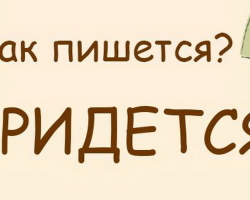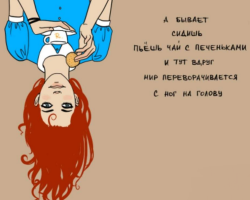From this article you will learn everything about the anatomy of the knee joint of a person.
Content
- The structure of the knee joint is anatomy, what it looks inside: description, scheme with designations, structural features, video
- Video: Anatomy of the knee joint
- The knee joint - ligaments, muscles, bones, meniscus: structure, scheme with description
- Human knee functions: How does the knee joint work?
- Diseases of the knee joint of a person - a list, symptoms: arthrosis, gonarthrosis 1, 2, 3 degrees, arthritis, break, synovitis, bake, baker cyst, osteoarthrosis, stretching
- Treatment of the knee joint - Features: Operation for replacement, endoprosthetics, orthosis, injections
- Ultrasound of the knee joint: What does it show?
- Damage to the knee joint: Popular treatment
- Liquid in the knee joint: Why hurt?
- Knee joint - rehabilitation: reviews after endoprosthetics
- Video: Endoprosthetics of the knee joint. Preparation, endoprosthetics, rehabilitation
The knee joint is the largest human body. It is intended to withstand body weight, allowing us to stand, walk, run or dance with ease, grace and smoothness. The presence of a well -functioning healthy knee is important for our mobility, and the ability to participate in various events. Read below about the anatomy of the knee joint, its functions, diseases and methods of treatment.
The structure of the knee joint is anatomy, what it looks inside: description, scheme with designations, structural features, video
It is easy to understand the anatomy of the knee joint, if you know how the names of its components were obtained:
- The terms used to describe anatomical features belong to an imaginary line drawn along the entire length of the body.
- This line divides the body into two equal halves.
- Parts of the body, and, accordingly, the joints that are found in pairs, will be located in the opposite areas of this midline.
Below you will find anatomical features of the structure of the knee, the structure, what it looks inside. The main components of the knee:
- Bones
- Cartilage
- Blues
- Tendons
- Muscles
In the knee joint, the thigh is articulated with the lower leg and the patella. The knee joint is the synovial joint. This means that it contains a liquid that lubricates it. This liquid is known as a synovial fluid. Here is a detailed description and scheme with designations:

- Cartilage with a thickness of 5 to 6 mm. Is responsible for depreciation and reduces friction during motor function.
- The fabric of the cartilage covers the bone and the posterior cup.
- Its surface is smooth and shiny.
- All bones are strengthened using special connecting fabrics.
- The main capsule is fixed with ligaments: medial and lateral.
- In the center there are crucible ligaments that help the foot move forward and backward. The ligaments located in front and behind support the tibia, so that it does not slip.
Here are a few more features:
- The knee cup in the front, two large bones in the form of a tube - tibial and femoral.
- At the bottom of the joint there are two condyles covered with cartilage. They perform the function of interaction with the surface of a tibial plateau.
- The movement of the knee cup is ensured thanks to condyles with a palloofemoral recess.
The structure of the knee is considered special. The joint is vulnerable and can easily be injured and ailments. In case of damage to this joint, it will have to be treated for a long time, and sometimes this is impossible to do, which leads to disability and loss of motor activity. In this joint, everything is important, and in particular, a hinge connection and a ligamentous apparatus.
Watch the video about the anatomy of the knee joint:
Video: Anatomy of the knee joint
The knee joint - ligaments, muscles, bones, meniscus: structure, scheme with description
As mentioned above, the structure of the knee joint in itself is difficult. This is a complex and largest joint in the human body. It consists of a complete set of different parts: bones, muscles, ligaments, cartilage, tendons and synovial fluid. The main feature of the knee is its feature to bend, straighten, rotate in different directions. Consider it in more detail.

- Blues - Their main function is the connection of different bones.
- Five main ligaments that provide its main function.
- They consist of many fibers, which in turn are connected in 2 bundles.

- Muscles - 3 muscle groups are located in front and on the sides of the surface of the joint.
- One of the important muscles is the 4-head muscle-the “knee-free lock”.
- It participates in restoration and rehabilitation, and also gives a quick signal for diseases of the joint itself.

- Bones - There are 4 of them: thigh, lower leg, cup and fibula.
- In the formation of the knee, there are: the distal end of the femoral, the proximal end of the tibia and the pattern itself.

- Meniskis - connective tissue cartilage, a kind of plates between the femoral and tibia.
- They amortize and soften the load on the articular surface of the bones, contributing to the soft distribution of synovial fluid.
The knee joint takes most of the loads of the whole organism. With the help of its components, a person can jump, run and walk.
Human knee functions: How does the knee joint work?

It is quite difficult to structured a joint in the human body a knee joint. Firstly, it contributes to the bending and extension of the leg in various directions, while holding and coordinating the correctness of the human body in space. Secondly, the joint must be strong enough to withstand human mass and minimize the possibility of human injuries during physical exertion.
Basic 4 functions knee joint:
- The flexion of the knee
- Fighting the joint
- Pronation - the movement of the leg inward
- Suppination - the movement of the leg outside
Here is a description of the functions of a human knee:
- Femur - serves as a support for the legs.
- Tibia - It is necessary for the mobility of the limb.
- Knee cap - Protects the knee joint from various injuries, such as displacements, dislocations, tossing.
How the knee joint works:
- Each of the above bones carries its load and is important with the functional ability of joint.
- A ligamentous apparatus plays a large role that performs the function of holding all bones in the joint, allowing different trajectories of movement.
- Thanks to the joints, the knee does not break up, moreover, it remains functional.
- Also, important components of the knee are nerve fibers and blood vessels that serve to fully function and nutrition of the knee.
If the functional ability of the knee is limited, then the entire bone system of the entire leg suffers. Therefore, at the first ailments, consult a doctor.
Diseases of the knee joint of a person - a list, symptoms: arthrosis, gonarthrosis 1, 2, 3 degrees, arthritis, break, synovitis, bake, baker cyst, osteoarthrosis, stretching
The lesions of the knee joint are one of the most common pathologies of the musculoskeletal system. Most of the patients of orthopedic centers suffer precisely from the pathologies of the knees. Here is a list of the main diseases of the knee joint of a person:
- Arthrosis
- Gonartrosis 1, 2, 3 degrees
- Arthritis
- Rupture of meniscus, ligaments, joints
- Synovitis
- Bursitis
- Baker's cyst
- Osteoarthrosis
- Ligaments and others
Below you will find a description of diseases and their symptoms.

Arthrosis - a progressive disease of the knee joint, followed by the destruction of cartilage. Here are the symptoms:
- Constant in the knee, sometimes permanent and even familiar, if the disease is launched.
- At the last stage of the disease, joint deformation is visible.
- The ligaments become short, mobility is limited.

Gonartrosis 1, 2, 3 degrees - This is a ailment of non -inflammatory nature and often leads to disability. In this ailment in the knee joint, calcinates are deposited, therefore, the people call such a disease “deposition of salts”. Here are the symptoms of pathology:
- Difficulties in walking, especially in the morning.
- Constant and stubborn pains in the inside of the knee.
- In the last stages of the disease, the patient cannot move without crutches or outside help.
- Explicit curvy of the lower leg.
- Pain when probing in the joint area.

Arthritis - Inflammation in the joint. It proceeds slowly, progressing and accompanied by painful sensations when moving. Pathology can lead to disability. Here are the symptoms of arthritis, rheumatoid arthritis:
- Painful sensations. At the initial stage, they can be weak and even insignificant. Then the pain becomes strong and regular.
- Swelling in the knee area.
- An increase in body temperature to 38 degrees.
- Walking with a slight chromium, but there is no strong restriction in mobility.
- At the last stage, bone deformation is noticeable. There is a spasm of muscles, their atrophy. Body temperature can increase to 39 degrees.
- Meteo -dependence appears. Changes in the weather are reflected on the pain in the knee.

Rupture in the knee There may be meniscus, ligaments, joint itself. This happens at the time of injury during jumping, deep squat, and so on. Symptoms of gaps in this joint:
- Acute pain, edema, development of hemarthrosis.
- The intensity of pain can be different - some victims cannot even step on their feet, others - they feel unpleasant sensations only when performing some movements.
- When the meniscus is broken, it is impossible to turn the leg to the side, the pain appears when the knee cup is moving.
- With degenerative breaks, swelling appears. The integrity of the cartilage is observed, which is located on the tibia and femur.

Synovitis - the synovial shell of the joint is inflamed. It is accompanied by the accumulation of effusion. Such a disease can be acute or chronic, as well as infectious or aseptic. It occurs during injuries, infections, congenital disorders, endocrine diseases, autoimmune pathologies and hemophilia. Symptoms:
- With an acute form of synovitis, for several hours the joint increases significantly in volume. The pain may not be very intense, and intensify when moving.
- When a large amount of fluid is accumulated, an increased sensation of bursting appears.
- In chronic synovitis, the pain appears in periods, since exacerbation alternates with remission.
- Fast fatigue when walking, aching stupid pains - can be observed with all types of synovitis.

Bursitis - Inflammation with damage to the synovial bag. There is an accumulation of serous or purulent effusion. Symptoms:
- Pain in the affected area is aching, intense or short -term.
- Swelling and redness. To the touch, the skin in the joint can be warmer than the skin in other parts of the body.
- The function of the knee and the entire limb is impaired.

Baker's cyst - benign neoplasm, tumor, single -chamber. It is usually located under the knee hole. In a neglected form it can grow, and the structure can resemble a clustard of grapes. In a complex form, partitions appear inside the cyst, small subsidiaries can even grow. Symptoms:
- Visually shows the cystic formation under the knee, not all over.
- A little pain may appear when moving.
- With an increase, a mobile cyst under the knee is felt, aching pain and discomfort appear when probing.
- STATION in movement and loads.
- Swelling in the knee area.
- The difficulty in flexion of the joint.

Osteoarthrosis - Chronic pathology, in which there is a loss of cartilage tissue in the knee. The mobility of the leg is limited, severe pain develops. Here are other symptoms of this disease:
- Pain is the main thing that bothers a person.
- At first, pain appears after prolonged walking or other motor activity.
- Then, at a later stage of the disease, pain can occur even at rest.
- In the neglected case, the joint jacket syndrome appears.

Sprain - It appears as a result of injuries and excessive loads. During the appearance of such an ailment, a person cannot move normally or even move the limb. Symptoms:
- Violation of supporting functions.
- Unstable gait.
- Manifestation of dislocations.
- Painful sensations in the knee, limited mobility.
- Deviation of the lower leg in the opposite rupture of the side.
The first signs of any ailment in the knee are pain, swelling. Unreasury in the gait, pain with weather dependence and others may appear. At the first signs of the development of pathology, consult a doctor.
Treatment of the knee joint - Features: Operation for replacement, endoprosthetics, orthosis, injections
Most people believe that the pain in the knees is forever, and attributing all to age they stop fighting. Of course, the restoration of the knee joint is by no means a quick process, and sometimes you can only relieve pain. It is worth noting the following:
- A feature of the treatment of the knee joint, like any other disease, is not self -medication, but observation in a highly profile specialist.
- The doctor will determine the cause in the diagnostic process and prescribe the appropriate recovery method for the patient.
- The main factor in the process of treatment is to determine the cause of the disease. She can be both simple fatigue and specific serious diseases.
In diseases of the knee joint, treatment occurs:
- The surgical method is surgery in severe injuries and inflammatory and deigenerative diseases.
- The conservative method is a set of measures aimed at eliminating pathologies, healing and rehabilitation of the knee joints: therapeutic gymnastics, physiotherapy.
- Folk remedies - can be an addition to the main treatment of the disease: warming up the joint (compresses from honey, etc.), visiting baths, mud wraps and others.

Joint operation or endoprosthetics - This is a complete or partial replacement by artificial joint of plastic or metal:
- The surgeon cuts off the affected sections of the joint, which cannot be restored in other ways.
- Previously, such an operation was almost not done, as it brought many complications and dangers for the patient.
- Currently, this procedure is considered an ordinary and is performed in ordinary state clinics.
- An excellent result is achieved in 95% of cases.
- After surgery, the patient returns to normal life.

Orthosis used for such pathologies:
- Arthrosis and other degenerative ailments.
- Fractures and other injuries.
- Damage to meniscus.
- Ruptures of ligamentous ribbons, tendons.
- With the instability of joint after injury or as a result of an anatomical feature.
- As preventive actions during professional sports.
Injections They are used to avoid complete immobilization or disability. Such drugs are used:
- Helping against inflammation
- Hormones of corticosteroids
- Analgesics
- Chondroprotectors
- Vitamin complexes
It is worth knowing: To optimize the therapeutic effect and remove adverse reactions, injections are used - intra -articular injections with a good symptomatic and therapeutic result at any stage of the disease.
Of course, the doctor can prescribe tablet drugs, but they do not always help due to low bioavailability. In addition, such medications can have a negative effect on the digestive system and on the whole body.
Ultrasound of the knee joint: What does it show?

An ultrasound of the knee joint is a visualization method carried out painlessly and without penetration into the joint. This type of diagnosis shows the following:
- The contours of the joint
- The condition of the outer layer of the bone
- The amount of synovial fluid
- The condition of the cartilage
This is one of the most popular types of diagnosis in any area of \u200b\u200bthe body. It is prescribed by a doctor at the first signs of any ailment or when the patient has discomfort or pain. The examination is carried out in several projections. If there are no pathologies, then all the boundaries of joint joints are clear, even, without breaks and protrusions.
Damage to the knee joint: Popular treatment

In addition to drug treatment of the knee joint of the legs, which is expensive, there are traditional medicine that helps no worse with different ailments. Treatment with natural components can be both additional and basic. It is simple in use and no less effective than expensive drugs.
Doctors prescribe folk methods that are advised to use simultaneously with medical treatment. Thanks to this approach, the effect of recovery increases and pain is relieved. Methods and recipes are mass. You need to choose exactly your own, which is suitable for you. Here are a few effective recipes of folk treatment:
Complex compress:
- A simple recipe is available to everyone.
- A leaf of fresh white cabbage, greased with natural honey, is needed.
- Attach this compress to the knee.
- Square it with a film and cloth. Leave it overnight. Well - 14 days.
Bath based on pine branches:
- A few branches of needles 3-4 Topinamybur tuber, 1 tsp Skipidar, 1 tbsp. honey, 1 kg sea \u200b\u200bsalt.
- The procedure on 30 min/every other day. Well - 15-20 baths.
Kefir and shell:
- Pre -lost shell mixed with kefir until the gruel is formed.
- Wrap the mixture in linen and attach to the sore spot.
- Then wrap it up for 2 hours. Procedure 1 per day. Well - 2 weeks.
Remember: Traditional medicine, of course, helps in some cases. But do not neglect the advice of specialists who will help to find the cause of the disease and prescribe adequate treatment, and natural components will be complemented by recovery.
Liquid in the knee joint: Why hurt?

Know pain usually appears when accumulating a liquid (effusion) in the knee joint, which leads to inflammation of the synovial membrane. An excess of fluid does not occur immediately, but gradually. The inflammatory process increases throughout the week. Junction can be quickly filled with liquid. If the artery is damaged, then the joint will fill in the blood. So why does this happen and why hurts?
Excess fluid in the knee joint may have a different cause of occurrence and different composition. For example, such as:
- Serous
- Fibrinous
- Purulent
- Hemorrhagic effusion
The first two species are aseptic (disinfected, not decaying) in nature. When a bacterial infection enters the liquid, pus appears in the knee joint. When blood is poured inside the joint - this is the last species - hemorrhagic effusion.
If the knee joint is filled with pus, it pulsates, bursts and pulls it, and at night suffering becomes stronger. In other options, the pain is acute, cuts, in -tributar, and increases when walking. Therefore, during the period of the disease, any physical activity is prohibited.
Knee joint - rehabilitation: reviews after endoprosthetics

The knee joint can be damaged by falling, wearing weights, with constant physical exertion. After that, pains appear and a person has to seek help in the early stages, almost all pathologies are cured without serious consequences. If the disease is launched and begins to progress, you cannot do without endoprosthetics. It is difficult to decide on the operation. Therefore, read the reviews of other people who are faced with a similar problem. Many of them are already in the rehabilitation period.
Larisa, 50 years old
I was preparing for the operation for a long time: I reduced weight, underwent a course of treatment training, quit smoking and trained to walk with crutches, since you could not do without them at first. Now after the operation has been held for a year. The motor function of the knee was completely restored. I can say for sure that the quality of life has increased.
Ruslan, 49 years old
I damaged my knee when I slipped on the ice in the winter. Since then it bothered me for 2 years. He made rubbish, compresses and even a familiar nurse put injections. Nothing helped, injections helped only for a while. As a result, he decided to go to the doctor. He said that time was missed. Incorrect treatment led me to the operating table. Now I am on rehabilitation. The crutches are no longer needed, I go on my own. There is no longer so strong as before. Physical activity is limited so far.
Ekaterina, 59 years old
My rehabilitation period was long. The operation was prescribed when the doctor diagnosed rheumatoid arthritis. I walked with crutches for three months, then a month with a wand and then performed exercises to develop the leg for a year. Now I have a new life: without pain, active and filled with new colors. Before the operation, she sat on painkillers. After the operation, she refused them on the 10th day.







Interesting article, thanks. I don’t know what I had with my knees, I didn’t reach the doctor like that. When they began to hurt, especially after a long walk, or if the elevator did not work and it was difficult to rise to the 8th floor. She began to drink arthroxum with martinia extract, discomfort and pain completely passed.
And I immediately went to the doctor, I could not treat myself. On the recommendation of the doctor, she began to take arthrophis, in his composition natural chondroprotectors and collagen obtained from marine organisms. I was very pleased with this composition, and I feel improved by well -being.
Useful article, I read it with pleasure. Now articular diseases have been “younger”, so the enemy needs to know in person, as they say. The knee bothers me too, now I know how everything is arranged inside us.
Nina, if the joints are worried, read the article on this topic http://wwww.medterapevt.ru/1340.html, I sent her to many of my friends, who has problems with the joints.